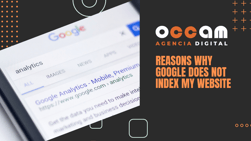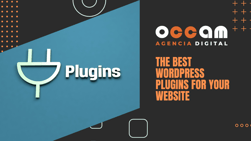Index Content
The home page, also called home, is the first thing that most of your users will see when they enter your website. Those who don't, will go directly to one of your sections, products or articles, although they will probably end up going to the main page if they want to look for something else on your website. It is, without a doubt, the part of your website with the most visits and your letter of introduction, the first image that users will have of your company, site, blog, etc.
Here are some tips on how to optimise the homepage of your website to generate a better impression
Design:
First of all, we must pay attention to the aesthetic part. It is true that a flawless design is useless if the rest of the elements of the page are not optimal, but if everything works correctly, a good design can give you great benefits.
The colours, the font, the size of the typography, the space for each section, the number of quadrants... Everything must fit together as if it were a puzzle so that your homepage is perfect.
It can be complicated if you have no knowledge of design, layout or programming, but with the help of a CMS, this whole process is much easier. A CMS (Content Management System) is a software, a computer system, whose functions are to create and enable the operation of a website. It is, to put it simply, a software that helps you, through templates already generated and programmed, to create a website. The CMS consists of two main elements and one of them, the CMA (Content Management App), allows the web manager to create, modify and delete content without using HTML language. You can use a CMS regardless of the type of website you want to create, as there are several available online designed for different websites.
Section menu:
This is essential. Without a toolbar or menu your homepage is nothing. If users do not have a starting point where they can see everything they can see and do on your website, most of the functionalities will not get any traffic. It is also necessary to be able to return to the homepage from all the auxiliary pages. For this, it is also necessary to invest time and effort in generating good interlinks.
As for the content and position of that menu, it is important that it is placed in a place on the page that is visible in the foreground. Normally, pages scroll down to reveal more content that does not normally appear in the standard screen size, and so it is also advisable that the menu scrolls down with the user, so that it is always accessible. If not, another useful option is to include a "scroll up" button to take you back to the top of the home page.
As for which sections to include, that depends on the type of website you want to create: if it is a blog, the themes it includes; if it is a shop, the different product lines; if it is a talent page, the names of the people represented... However, a recommendation common to any website is to include a final contact section and another for presentation, either of the company as an entity or of the members that make it up if it is relevant. You can also include all the contact information at the bottom of that page and keep that space fixed on all the pages.
Space for social networks:
Nowadays any website, be it a company's or an individual's, has social networks. It is advisable to reserve a space on the website to put a highlighted widget with content from those networks, be it Twitter, Instagram, etc. This way they can see some of the latest posts and news as well as follow your profiles if they wish.
Achievements and press section:
As much as quality sells itself, a website has to boast about its achievements. Whether it's a company or a personal blog, it gives a very good image to include (good) opinions from third parties about your content, your site or your products. That reinforces the image of the site and helps to generate a feeling of reliability in the customer. The way to organise this, would be similar to the social networks widget, it could even be a scrollable banner with different quotes.
Latest news or posts:
Although there is timeless content, generally the latest actions of a company are the most important. That is why it is a good idea to always include on the front page, as the first content an offer, a new product, the latest article... In addition to giving importance to the latest launch, the customer who visits the website repeatedly will see that new content is generated every little while.
Pop ups, display and CTA:
The function of the home page is not only to serve as a skeleton or land page. It is also the place where users spend most time and the most visited space and, therefore, it is the best place on a website to include pop-ups. A pop-up is a small pop-up window that suddenly appears somewhere on the page where the user is browsing and that is superimposed on the rest. In this way, it captures their attention on a specific content, the one that each company wants. It is usually used for offers, discounts, newsletters , etc.




